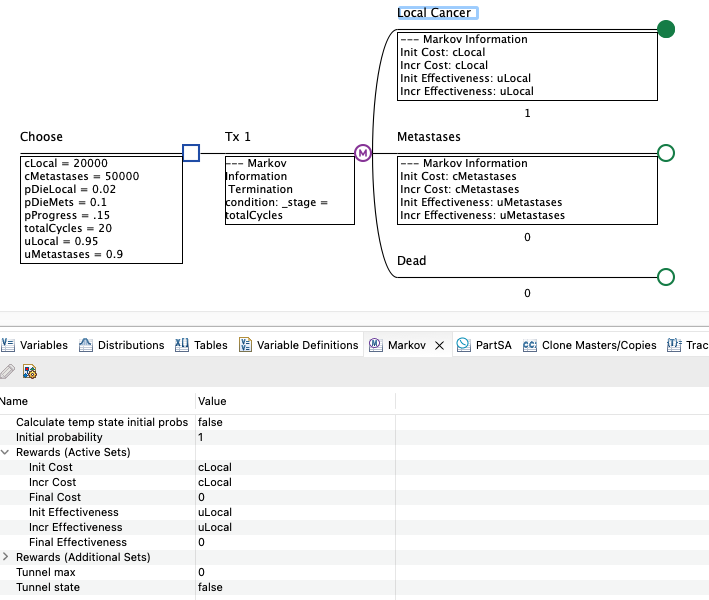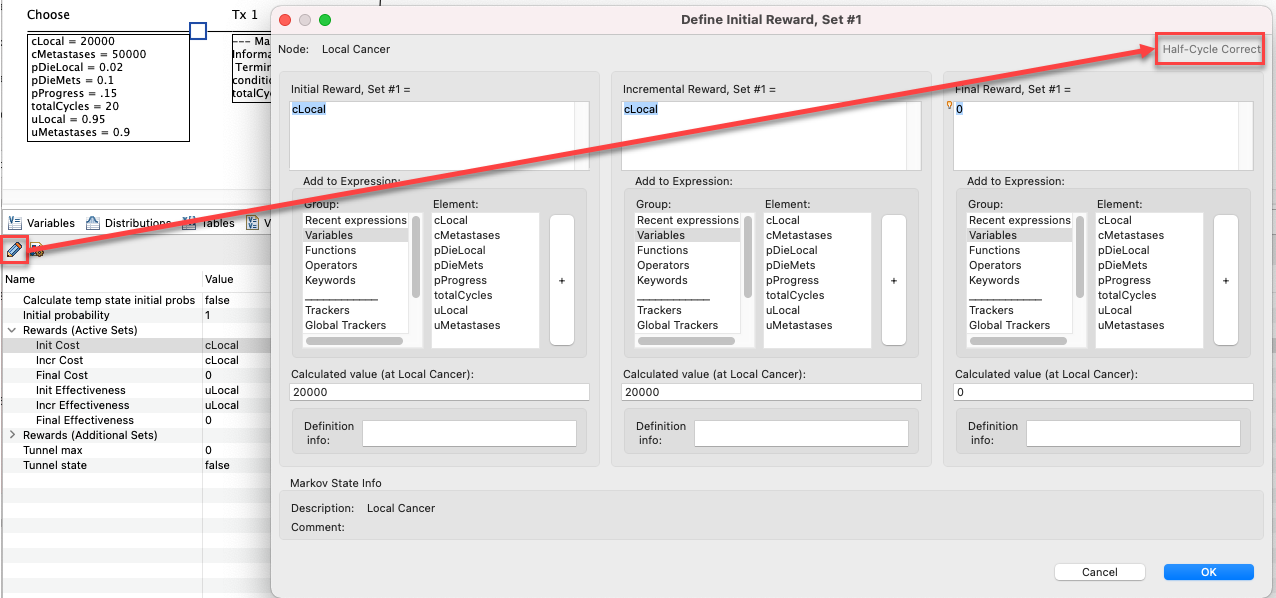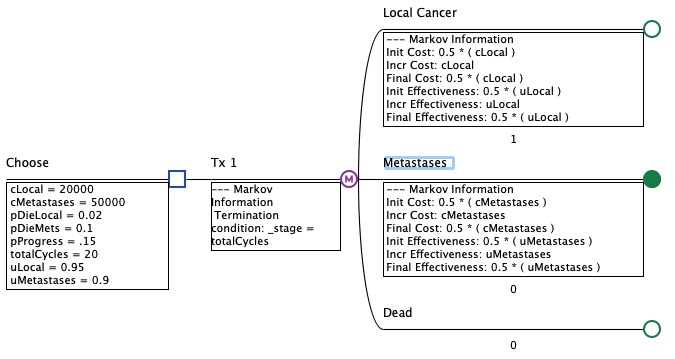6.4 Adding State Rewards
In TreeAge Pro, costs or utilities assigned in a Markov model are called rewards. A state reward refers to a value that is accumulated by individuals because they spend one cycle in a particular state. Most values are accumulated at the Health States. Since the Calculation method for the model is Cost-Effectiveness, we must enter both Cost and Effectiveness values for each Health State.
Health State Costs are costs associated with general membership in a disease state (e.g., medication, regular checkups, etc.). Costs associated with events would be entered at the appropriate events in the patient pathways, not at the Health State.
Utilities are generally only associated with Health States. Utility for healthier states will be greater than utility for less healthy states. Utility for the Dead state should be 0.
A note on cycle length
Since a state reward is accumulated over a cycle, the reward value provided must be consistent with the cycle length. For instance, if you have an annual cost of $6,000 for a particular state, but your cycle length is 1 month, then the state reward (cost) should be $6,000/12, or $500 per cycle. Utilities should always be entered as inputs reflecting your health status, therefore they would always be divided by 12 for a monthly model.
Initial, incremental and final rewards
Note that for both cost and effectiveness, there are three entries.
-
Initial: accumulated in the first cycle (_stage 0).
-
Incremental: accumulated in all other cycles.
-
Final: accumulated after the last cycle (typically 0).
It is common to use the same value for initial and incremental rewards as we will do in this example. However, there are times that a one-time-only cost would be added to initial reward, but not incremental, while other costs could be in both. Final rewards are typically only used for half-cycle correction.
To add state rewards
-
Open the Markov View.
-
Select a the Local Cancer health state.
-
Enter the Init Cost reward cLocal.
-
Enter the Incr Cost reward cLocal.
-
Enter the Init Effectiveness reward uLocal.
-
Enter the Incr Effectiveness reward uLocal.
-
Select a the Metastases health state.
-
Enter the Init Cost reward cMetastases.
-
Enter the Incr Cost reward cMetastases.
-
Enter the Init Effectiveness reward uMetastases.
-
Enter the Incr Effectiveness reward uMetastases.

The Health State Rewards (Cost and Effectiveness) are shown under each Health State once they are added. Zero values do not show. But a value, even if it is 0, must be entered into the State Rewards.
Half-cycle correction
Most modelers choose to apply half-cycle correction to state rewards. TreeAge Pro supports two configuration options for calculating half-cycle correction to Markov rewards - Traditional Markov Cohort and Within-Cycle Correction (WCC). Choose your preferred option in Tree Preferences.
To choose Traditional Markov cohort or Within-Cycle Correction:
-
Open Tree Preferences.
-
Select Calculation > Markov/DES and then select either Traditional Half-Cycle Correction (HCC) or Within-Cycle Correction (WCC).
This model uses the option of Half-Cycle Correction (HCC).
To apply HCC to the State Rewards:
-
Select the health state of Local Cancer and open the Markov View.
-
Select one of the three cost rewards.
-
Click the toolbar pencil icon to open the Half-Cycle Correction editor.
-
Within the Half-Cycle Correction editor, click the button at the top right hand side and the rewards will be corrected. Then click OK.
-
Repeat 3 more times for Local Cancer Effectiveness, Metastases Cost and Metastases Effectiveness.

The State Rewards now appear as in the figure below.

For more details about application of half-cycle correction, refer to the section Converting between Within-Cycle Correction and Half-Cycle Correction
